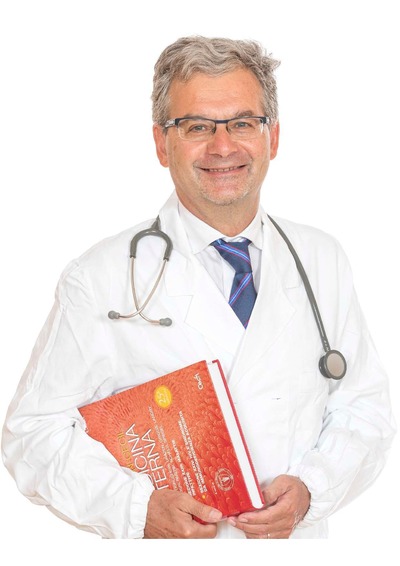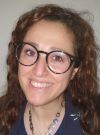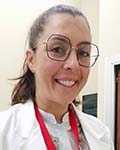Studying at the University of Verona
Here you can find information on the organisational aspects of the Programme, lecture timetables, learning activities and useful contact details for your time at the University, from enrolment to graduation.
Academic calendar
The academic calendar shows the deadlines and scheduled events that are relevant to students, teaching and technical-administrative staff of the University. Public holidays and University closures are also indicated. The academic year normally begins on 1 October each year and ends on 30 September of the following year.
Course calendar
The Academic Calendar sets out the degree programme lecture and exam timetables, as well as the relevant university closure dates..
| Period | From | To |
|---|---|---|
| 1 SEMESTRE LM-6 | Nov 20, 2023 | Feb 23, 2024 |
| 2 SEMESTRE LM-6 | Apr 2, 2024 | Jun 21, 2024 |
| Session | From | To |
|---|---|---|
| 1° semestre LM-6 | Feb 26, 2024 | Mar 29, 2024 |
| 2° semestre LM-6 | Jun 23, 2024 | Jul 31, 2024 |
| Sessione Autunnale LM-6 | Sep 2, 2024 | Sep 27, 2024 |
| Period | From | To |
|---|---|---|
| Festa di Ognissanti | Nov 1, 2023 | Nov 1, 2023 |
| Festa dell'Immacolata | Dec 8, 2023 | Dec 8, 2023 |
Exam calendar
To view all the exam sessions available, please use the Exam dashboard on ESSE3. If you forgot your login details or have problems logging in, please contact the relevant IT HelpDesk, or check the login details recovery web page.
Should you have any doubts or questions, please check the Enrollment FAQs
Academic staff
Study Plan
The Study Plan includes all modules, teaching and learning activities that each student will need to undertake during their time at the University.
Please select your Study Plan based on your enrollment year.
1° Year
| Modules | Credits | TAF | SSD |
|---|
2° Year It will be activated in the A.Y. 2024/2025
| Modules | Credits | TAF | SSD |
|---|
1 module among the following1 module between the following| Modules | Credits | TAF | SSD |
|---|
| Modules | Credits | TAF | SSD |
|---|
1 module among the following1 module between the followingLegend | Type of training activity (TTA)
TAF (Type of Educational Activity) All courses and activities are classified into different types of educational activities, indicated by a letter.
Analisi di dati biomedici e biostatistica (2023/2024)
Teaching code
4S011591
Credits
6
Language
English
Scientific Disciplinary Sector (SSD)
MED/01 - MEDICAL STATISTICS
Courses Single
Not Authorized
The teaching is organized as follows:
Teoria
Esercitazioni
Learning objectives
The course aims to provide students the methodological tools to properly apply statistics to biology and medicine, and to develop the skills to use computer tools to analyze biological data in quantitative form. The course integrates the acquisition of computer skills and statistical knowledge, enabling the student to analyze and reach quantitative conclusions on analyses of experimental data in the biological and medical fields. The use of computers allows the student to directly test his or her degree of understanding of the topics covered, and to bring him or her closer to modern Machine Learning and Artificial Intelligence techniques applied to the analysis of biomedical data. The student will be able to apply the main models of multivariable analysis (multiple linear regression for quantitative outcomes, logistic model for dichotomous outcomes, Cox proportional hazards model for survival analysis) and multivariate analysis (discriminant analysis, principal component analysis, correspondence analysis) to problems in health care. He/she will know how to use Artificial Intelligence and Machine Learning techniques in the "omics" sciences (genomics, transcriptomics, proteomics, metabolomics) and diagnostics (radiodiagnostics, reading histopathological images), and will consciously distinguish between supervised and unsupervised learning techniques.
The student will understand the differences between statistical techniques (multivariable and multivariate analysis) on the one hand and bioinformatics techniques (Machine Learning and Artificial Intelligence) on the other, and will know how to use these methods in an integrated way.
Teaching will involve the integration of theory lectures, laboratory exercises and group work. Analysis of scientific articles related to the topics covered in the course will also be offered.
Upon completion of the course, the student will have acquired:
a) thorough understanding of the different theoretical foundations of generalized linear models and multivariate symmetric models on the one hand and Machine Learning methods on the other hand;
b) ability to discover patterns in data and make predictions based on these patterns and complex models to answer scientific questions in health care;
c) ability to apply the knowledge gained for critical literature review;
d) ability to choose the most appropriate analysis techniques based on the knowledge gained;
e) ability to perform analyses using simple statistical software (e.g., R, MATLAB®,...) and taking advantage of data visualization;
f) ability to work as part of a team, interpret the results of experimental analyses, and communicate them according to the standards of the scientific community.
Prerequisites and basic notions
Students should have basic knowledge of Mathematics and Statistics.
Program
------------------------
UL: Teoria
------------------------
Refreshment of knowledge on inferential methods: confidence intervals to estimate parameters, and hypothesis testing to base decisions on scientific evidence. Simple hypothesis testing: test t for unpaired and paired data, analysis of variance, correlation and regression, chi-square test.
Experimental design: parallel-group, cross-over, and factorial designs. Control and experimental groups, randomization, blinding. Computing an adequate sample size in order to achieve a given power for statistical tests, or a given precision of the estimates. Test-retest to evaluate measurement precision: repeatability versus reproducibility.
Likelihood, maximum likelihood estimate. Generalized linear models.
Models for multivariable statistical analysis: multiple linear regression to study quantitative outcomes, logistic model to study dichotomous outcomes, and Cox model to study survival.
Evidence-Based Medicine; systematic reviews and meta-analyses.
Multivariate analysis: discriminant analysis, principal component analysis, correspondence analysis.
Basic concepts of artificial intelligence and machine learning: supervised and unsupervised learning. Comparison between and integration of traditional statistical methods (multivariable and multivariate analyses) and bioinformatic methods (machine learning).
------------------------
UL: Esercitazioni
------------------------
Practical exercises will be carried out on the theoretical program carried out. Students will have to use a spreadsheet (excel) and R software to perform descriptive statistics and perform simple statistical tests (t-test for unpaired and paired data, one-way ANOVA, correlation and regression, chi-square test).
Bibliography
Didactic methods
------------------------
UL: Teoria
------------------------
The course will consist of frontal lessons in classroom.
------------------------
UL: Esercitazioni
------------------------
Lessons will be held in the computer room. Each student will use a computer equipped with statistical software (R) and will be guided to solve simple statistical problems.
Learning assessment procedures
------------------------
UL: Teoria
------------------------
The exam will be written. In the first part (theory), students will have to answer about 30 multiple choice questions with 5-8 possible answers.
------------------------
UL: Esercitazioni
------------------------
In the second part of the exam students will have to solve problems of inferential statistics, which will require to compute confidence intervals and/or to perform simple statistical tests. For this purpose, students will be enabled to use a computer equipped with a statistical software.
Evaluation criteria
------------------------
UL: Teoria
------------------------
The exam will evaluate not only the acquisition of statistical knowledge, but also the ability to adopt it critically to solve health problems. One point will be awarded for each correct answer, and zero points for incorrect or missing answers. The first part of the exam will weigh 3/5 on the final grade of the module.
------------------------
UL: Esercitazioni
------------------------
The exam will evaluate the ability to solve biological-health problems by combining theoretical statistical knowledge with the computer skills in using a statistical software. The second part of the exam will weigh for 2/5 of the final grade of the module.
Criteria for the composition of the final grade
The final mark will be expressed on a scale ranging from 0 to 30. A minimum mark of 18 will be required in order to pass the exam.
Exam language
------------------------ UL: Teoria ------------------------ Inglese ------------------------ UL: Esercitazioni ------------------------ inglese
Type D and Type F activities
Modules not yet included
Career prospects
Module/Programme news
News for students
There you will find information, resources and services useful during your time at the University (Student’s exam record, your study plan on ESSE3, Distance Learning courses, university email account, office forms, administrative procedures, etc.). You can log into MyUnivr with your GIA login details: only in this way will you be able to receive notification of all the notices from your teachers and your secretariat via email and soon also via the Univr app.
Student login and resources
Prova Finale
Per essere ammessi alla prova finale occorre avere conseguito tutti i crediti nelle attività formative previste dal piano degli studi, compresi quelli relativi all’attività di tirocinio. Alla preparazione della tesi sono assegnati 8 CFU.
La prova finale si compone della redazione e dissertazione di un elaborato di tesi sperimentale in lingua inglese. Per il lavoro di tesi lo studente avrà la supervisione di un docente dell’Ateneo di Verona, detto Relatore, ed eventuali correlatori in possesso almeno della laurea triennale anche se esterni al Corso di Laurea. Scopo della tesi è quello di impegnare lo studente in un lavoro di formalizzazione, progettazione e di ricerca, che contribuisca sostanzialmente al completamento della sua formazione professionale e scientifica. Il contenuto della tesi deve essere inerente a tematiche o discipline strettamente correlate al profilo professionale. Si ricorda che presentare tesi copiate o procurate da altri costituisce reato. (Legge 475/1925 tutt’oggi in vigore).
Valutazione della tesi
La valutazione della tesi sarà basata sui seguenti criteri: livello di approfondimento del lavoro svolto; contributo critico del laureando; accuratezza della metodologia adottata per lo sviluppo della tematica.
Punteggio finale
Il punteggio finale di Laurea è espresso in cento decimi ed è così formato:
• Media ponderata rapportata a 110 dei voti conseguiti negli 11 esami curriculari (arrotondata per eccesso o per difetto al numero intero più vicino);
• Discussione della Tesi: da 0 fino ad un massimo di 10 punti. La commissione di Laurea potrà attribuire ulteriori punti anche in base a: • Presenza di eventuali lodi ottenute negli esami sostenuti: fino ad 1 punto aggiuntivo; • Partecipazione ai programmi Erasmus: fino a 2 punti aggiuntivi; • Laurea entro i termini della durata normale del corso: 1 punto aggiuntivo. La lode può venire attribuita con parere unanime della Commissione ai candidati che conseguano un punteggio finale maggiore o uguale a centodieci.
Orario lezioni
In questa sezione è possibile visualizzare il file contenente l'orario delle lezioni.
Nel file è indicata anche l'aula di svolgimento delle stesse.
Il file viene aggiornato regolarmente; è possibile verificare la versione (o la data di ultimo aggiornamento) nell'apposita cella del file, in alto a sinistra.
Eventuali variazioni dell'ultimo minuto verranno comunicate dal Docente alla mail di classe il prima possibile.
In this section you can find the file containing the lesson timetable. The file also indicates the classroom where they are held. The file is updated regularly; you can check the version (or the date of last update) in the appropriate cell of the file, at the top left. Any last minute changes will be communicated by the Professor to the class email as soon as possible.
Documents
| Title | Info File |
|---|---|
|
|
pdf, it, 182 KB, 19/04/24 |
Appelli d'esame
In questa sezione è possibile visualizzare il file contenente il calendario degli appelli d'esame.
Il file viene aggiornato regolarmente; è possibile verificare la versione (o la data di ultimo aggiornamento) nell'apposita cella del file, in alto a sinistra.
Eventuali variazioni dell'ultimo minuto verranno comunicate dal Docente alla mail di classe il prima possibile.
In this section you can find the file containing the exam calendar. The file is updated regularly; you can check the version (or the date of last update) in the appropriate cell of the file, at the top left. Any last minute changes will be communicated by the Professor to the class email as soon as possible.
Documents
| Title | Info File |
|---|---|
|
|
pdf, it, 128 KB, 28/02/24 |
Compilazione piani di studio
Le attività a scelta dello studente (12 CFU, ambito D) comprendono insegnamenti impartiti presso l’Università di Verona.
Per la coorte 2023/2024, la compilazione del piano didattico potrà avvenire a valere dal secondo anno di corso.
ELENCO ATTIVITÀ AL 2° ANNO A.A. 2024/2025:
Oltre alle attività precedentemente citate, potranno essere selezionate quelle già previste nei gruppi di scelta al 2° anno, in modo da consentire agli studenti di sostenere in TAF D quelli non scelti in altri TAF.
Potranno essere aggiunte, inoltre, nel corso dell’anno eventuali seminari/attività varie/convegni previo accreditamento.
Il riconoscimento di tali CFU dovrà essere valutato dalla Commissione Didattica sulla base della coerenza delle attività scelte rispetto al percorso formativo del corso di studio. I crediti a scelta non sono vincolati, ma, in sede di valutazione finale, si tiene conto della coerenza e dell’adeguatezza delle scelte effettuate dallo studente nel quadro formativo complessivo. Pertanto è raccomandato di non scegliere attività che possano in gran parte risultare simili ad insegnamenti già presenti nel piano didattico del CL in SNSA, bensì di scegliere attività che apportino un reale arricchimento del percorso formativo.
Attività tipo F / D
La Commissione Didattica organizza l'offerta di alcune attività didattiche opzionali di tipo (D) realizzabili con:
• Seminari
• Insegnamenti offerti in altri Corsi di Studio
• Convegni e workshop
I seminari sono un’attività didattica che si propone di affrontare una tematica con un approccio interdisciplinare ed è svolta di norma in compresenza da più docenti, anche di SSD diversi.
Gli studenti scelgono di partecipare a convegni e/o seminari non organizzati dal CdL, liberamente purché attinenti al profilo professionale al fine di maturare i CFU richiesti dal piano di studi.
Il calendario e l’elenco delle attività didattiche elettive sono pubblicati nella sezione avvisi del sito internet del CdL.
Per quanto riguarda il riconoscimento di crediti relativi alle TAF di tipo D, la Commissione Didattica applica la seguente regola generale di conversione:
0.25 CFU per ogni ora di seminario o attività didattica frontale che non prevede esame.
La Commissione valuterà caso per caso la conversione dei CFU relativi ad insegnamenti presi da altri corsi di studio, fino ad un massimo di 6 CFU, a prescindere da quale fosse il numero di CFU dell’insegnamento nel corso di studi originale. Si fa presente che, nel caso in cui l’attività a scelta preveda il superamento di un esame, questo è essenziale per l’ottenimento dei CFU rispettivi, pur non contribuendo alla media ponderata finale della carriera dello studente.

 giuseppe.bertini@univr.it
giuseppe.bertini@univr.it
 045-802-7682
045-802-7682

















